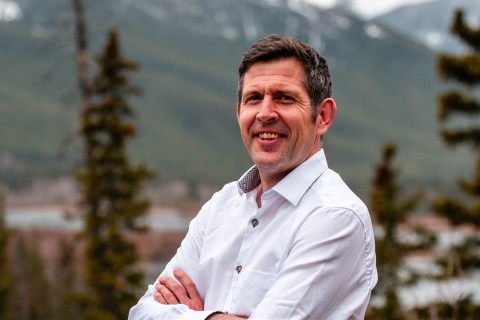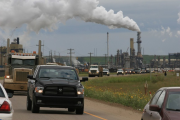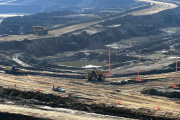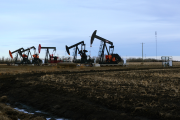Ongoing criticism of oilsands development in Alberta is wreaking reputational havoc on our province, culminating in an unfortunate hit to tourism operators with the recent Rethink Alberta campaign. We think a different response could level the criticisms.
We're not alone. U.S. Ambassador David Jacobson challenged industry to "do more to demonstrate how they're meeting the challenges of providing energy security while meeting their obligations of environmental stewardship."
That's not what's happening though. Instead, we're witnessing a self-defeating cycle of ramped up public relations from the Government of Alberta that never truly addresses the substance of the criticisms directed at the province's regulation of the oilsands industry.
Last year the Pembina Institute released Clearing the Air on Oilsands Myths, a report that showed the Alberta Government and industry have been making some pretty misleading and selective claims around oilsands development - ironically, a charge they lay against the architects of the Rethink Alberta campaign.
There are lots of warring statistics from both sides around oilsands development, which are surprisingly, mostly accurate.
We can argue about whether the oilsands deposit is the size of England and whether half of it has already been leased for development (both statements are true). We can question whether current mines "only" occupy 600 square kilometres (that statements is true as well).
We can talk about the fact that oilsands production produces about 300 per cent more emissions than conventional oil production from Canada and the U.S., or downplay that statistic because those emissions are "only" about 10 to 30 per cent worse than the average for conventional oil if you factor in the pollution from burning that oil in your vehicle (both statements are true). Of course, neither statement is particularly comforting at a time when we need to be making deep reductions in greenhouse gas emissions.
Some will speak to the fact that oilsands operators are investing billions of dollars trying to deal with tailings waste (true), while others will say that successful reclamation of these toxic lakes that are known to be seeping into the water system has never been demonstrated (also true).
How long are we going to remain in the vicious claim-counter-claim cycle before we acknowledge the monumental environmental challenges of oilsands development and seriously, not superficially, commit to actually addressing those challenges?
This isn't to say that there hasn't been some progress to lessen per-barrel environmental impacts of oilsands development, but has the Alberta government developed environmental limits to ensure that the air, land and water is protected in our province or that barrel-for-barrel the oilsands are environmentally competitive with other forms of energy production? In both cases, the answer is sadly - no.
We agree with recent acknowledgements from the premier's council for economic strategy: "Alberta's reputation with key energy customers has been damaged in recent years, and relationships with communities near oilsands developments (especially First Nations communities) are strained."
And we certainly agree when the council says, "It may take a dramatic gesture to convince a skeptical public to applaud Alberta as a responsible natural resource steward."
It's true - we can continue to circle the wagons or, as a growing chorus is demanding, actually listen to both concerned stakeholders inside Alberta and customers and critics around the world to start a dialogue about ways to lessen the environmental impacts of oilsands development.
There are plenty of actions Alberta could start with, such as placing a high enough price on carbon to drive investments towards reducing greenhouse gas emissions, prohibiting the creation of tailings ponds for new projects, developing a network of conservation areas to compensate for wildlife impacts, and prohibiting water withdrawals from the Athabasca River during low flow periods.
It's a valid criticism that oilsands environmental management has not kept pace with the rapid rate of oilsands expansion and that the setting of environmental rules has been granted less importance than increasing production. Alberta could regain some credibility by pausing new project approvals until some of the key missing elements to responsible management are in place.
Bottom line is this: A war of words won't solve the problem and until we address the underlying gaps in Alberta's regulatory regime, Alberta is going to continue to be criticized for mismanaging oilsands development. Fortunately, we can minimize those criticisms if we rethink our response.





